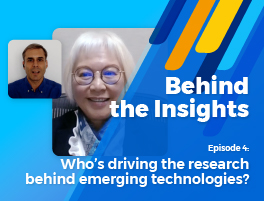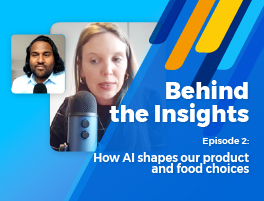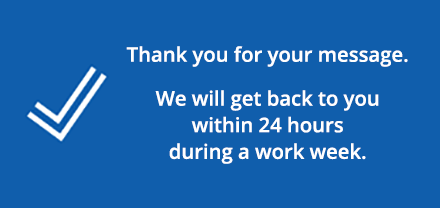Behind the Insights episode 5
Using new tools to drive faster results
This is Behind the Insights, a vodcast series by MetrixLab. We talk to experts from all over the world to find out what’s really driving today’s hottest topics in insights.
In this episode, join Rob Valsler, Managing Director of AMEA at MetrixLab, and Shirley Ng, Research Principal at General Motors, as they discuss using new tools to drive faster results.
Check it out and stay tuned for more episodes coming in 2022!
Or if you prefer, read the full transcript below.
Episode transcript:
Rob Valsler: Hello and welcome. I’m Rob Valsler. I’m the managing director for Asia, Middle East and Africa at MetrixLab, and I’m joined today by Shirley Ng from General Motors. Shirley, would you like to introduce yourself?
Shirley Ng: Hello, thanks for inviting me.
My name is Shirley Ng, Research Principal of GM International, currently based in Shanghai. The focus of my work is mainly in global product development, working with internal teams such as design and product planning groups. My work focuses on North Asia, Japan, Korea, Middle East and North Africa. Also Australia, Europe and including Russia in both the luxury and mass segments of the auto sector. And thank you, and I’m very happy to be here.
Finding new ways to ask old questions
Rob: And fundamentally, especially in terms of when we’re talking about new vehicles, we’re bringing a car or vehicle to market, so there is a process that you have to go through that maybe doesn’t change as much whilst what we’re measuring or what we’re evaluating is really exciting and fundamentally different. The actual process of taking that vehicle to market is actually quite similar. And so sometimes I think you might get swept away with the changes. But actually, the continuities are quite important, making sure that there’s that robustness to the data and showing that this vehicle has a good chance of success in market.
Shirley: Definitely, we need to find new ways to talk to the customers and faster return, yes, of the feedback. We would help the company make a well-informed decision making and faster so that, you know, we are very conscious of finding new methodology is something that we are ongoing, you know, searching for, and I think that MetrixLab have been great help to us actually, coming up with new tools and new ways of asking old questions. That we really, you know, is, you know, is focusing on and finding new vendors that can help us like you guys.
Rob: Yeah, very much from the agency side, I think it’s about meeting that challenge. It’s not about coming out with fundamentally different data and different types of input. It’s actually trying to produce some of the same types of data, or the same types of information to support the business decision making.
We’re doing it in this kind of different methodology or different paradigm where the speed is much quicker, but it’s not like suddenly the answers to the questions you need are different, you just need them fast or you need consumers to understand things in a different way.
Managing the 4 V’s of data
Rob: So I’ve heard you talk in the past about these four V’s of data, variety, veracity, velocity volume. I just wondered if we could talk about that as well, I find it a really interesting framework, what each of those words means in this context and how the framework is useful for businesses in looking at that role of being a gatekeeper.
Shirley: Managing the four V’s, that’s I would say a daily mission for us. The four V’s are interrelated, right? You’re talking about velocity, speed and veracity, accuracy and volume of data and variety, right, the breadth of it. So in popular journals, I read a lot about EVs and its development, who’s doing what and who’s better than who, that kind of discussions. And quite a lot is biased, I would say, and some are downright outdated in terms of the writer’s source of information. So we spend more time scrubbing the data, as we say, as a gatekeeper, and with less headcount to decide what we can or cannot use to, you know, to help well-informed decision making.
This is something that we do today in research that is also different in the past, say 20 years ago. Product development type projects are much more controllable because we execute primary research, you know, in product development and have total control of the recruitment process and the respondents. The four V’s will impact brand management much more, I would say, because quite often these information are gathered by third party marketing agencies, the ad agencies, for instance. And this is when we are concerned about accuracy, veracity.
This is how I see it, to sort of sum it up, the four V’s. Yeah.
Rob: So if I think about these different dimensions, the velocity and the veracity is really incumbent on us as the agency to really try to to meet those evolving and increasing benchmarks about how fast we can deliver results whilst maintaining our absolute requirement on accuracy.
The volume and the variety feel like challenges for people on the client side or on the company side to deal with. How am I going to synthesize these different types of data or how am I going to handle purely the volume of data that’s available to me as a market researcher, but also to my colleagues who are decision makers? How do I help them sift through the variety and that volume?
Would you see it like that, as a difference for the supplier side and for the decision makers?
Shirley: I don’t see the variety and accuracy as something we need to balance as much. Let me tell you what is much more pressing to us is speed, the speed and accuracy, you know, and we have to balance both.
So speed today, how fast can we get the results? And actually, even when we get the results back, there’s an archive of information that would take time to extract.
But however, with today’s technology, I would say the speed can be taken care of by AI. Accuracy of data can be put in front of them as a tool. As long as this is really about the use of AI in market research, which is a very popular topic these days and the importance of the human brain. Now, AI is a great technology that can save time and provide data visualization very quickly, as in a chart, for instance, as long as the data is available and put in front of the tool. It can retrieve the data from massive archives that allow us to visualize data much faster than manual extractions.
But however, you know, let’s talk about the accuracy, the breadth of the data, you know, how do we draw, you know, insights from that? So that should not be the end of data analysis when it comes to AI.
It helps with speed, right? We visualize it. Now, the human brain has a capacity of re-experiencing events from lingering memories. We don’t have a memory chip in our head. We don’t store data. But what we do have is lingering memories.
So when we see a data point that reminds us of a past similar event, this memory can trigger a cascade, and allow related experience to echo. And this is the beauty of the human brain, I believe, and that is something we call insight then, isn’t it?
To summarize, AI is a really good new tech, right? That should be of great assistance to allow quick data visualization, but it should not be the end of it. But it is the human brain that re-experience and recombine information through a creative imagination, and that is the beauty of telling a story through data.
And this is what I really enjoy doing. Balancing speed and accuracy and with the breadth of information in front of us.
Rob: The tools are getting better, the tools are getting more sophisticated, but without the person in control, I think that’s where we’re not quite there yet, when there is no artisan using various tools to make something, right? The tools can make the final product much quicker, or the tools can make the final product far more sophisticated than could have been done before with more basic tools.
But the artisan who’s using those tools still plays a key role in what is being envisioned and what comes out in terms of insights. I think that those potentially programs in the future there will have a higher degree of AI than where we are now, but the role of the designer or the role of the interpreter and synthesizer on the company side is still going to be very key. That gatekeeper will still be there and the person crafting the design and finalizing the outputs will still be there on our side. So it’s really interesting to see that limit placed on AI.
Really, really fascinating conversation today, Shirley. Thank you so much for your time.
Shirley: Thank you for inviting me. I always enjoy chatting with you, and it’s been a pleasure.









